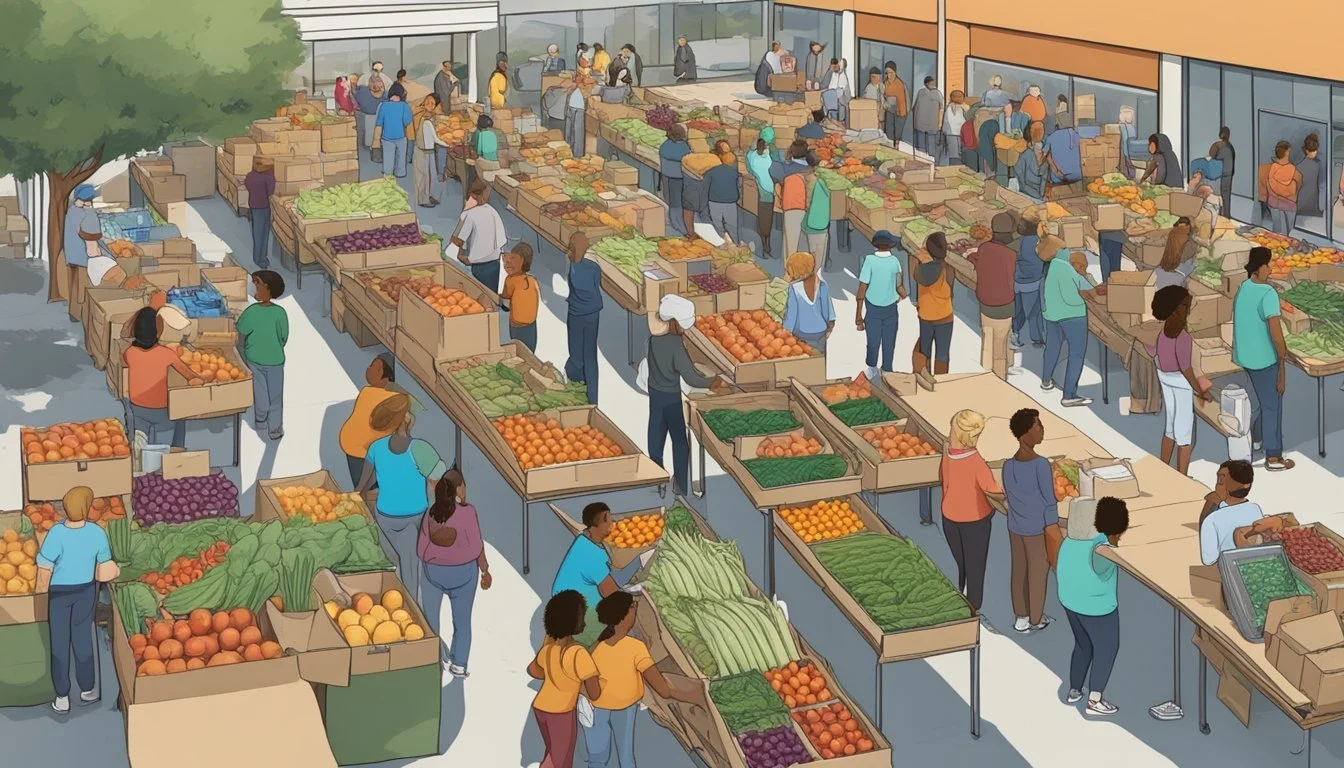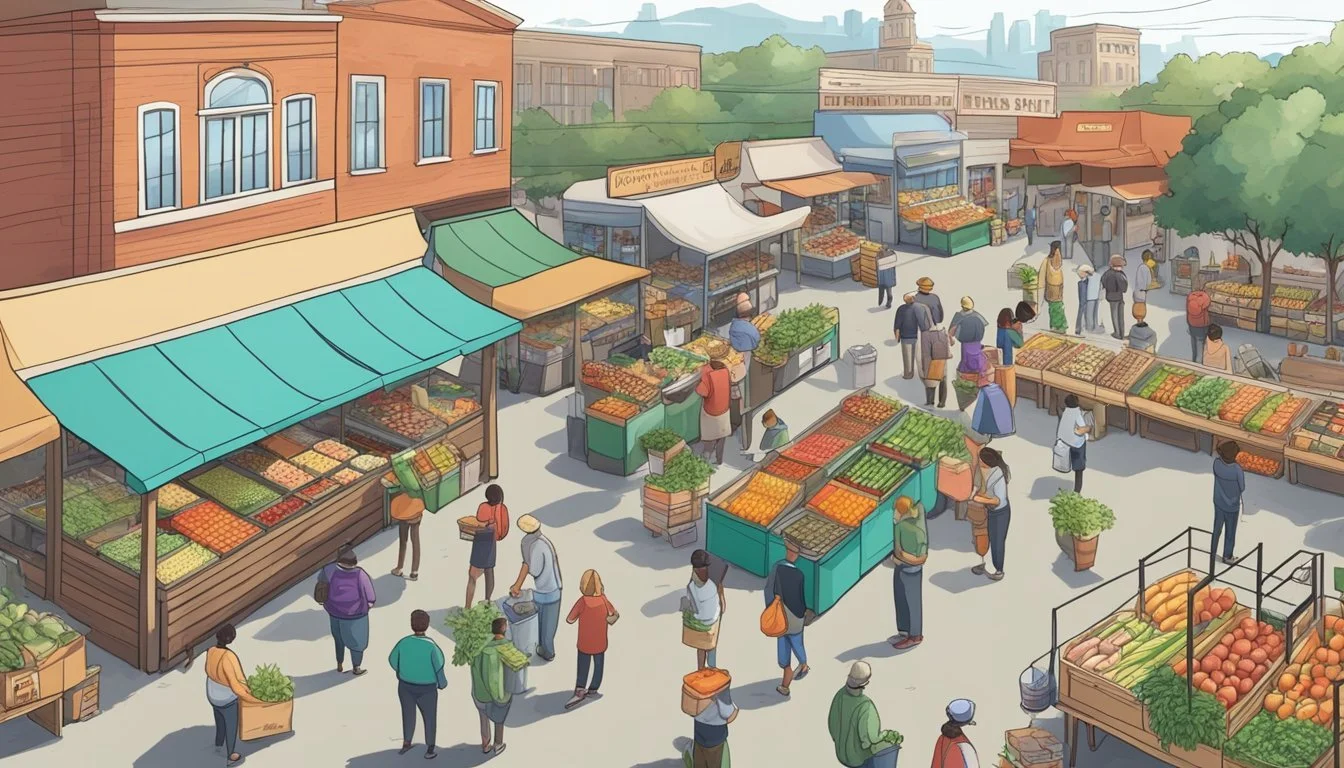California Food Challenges
Ultimate Guide to Gut-Busting Contests
California has become a thrilling hub for food lovers who crave not just flavors, but also excitement and competition. Known for its diverse culinary scene, the Golden State offers a variety of food challenges that cater to those with large appetites and a competitive spirit. From enormous burritos to towering burgers, these challenges are designed to test the limits of diners across the state.
Apart from the sheer size of the portions, these challenges often come with unique twists—like the requirement to consume eye-watering spice levels or to finish the feast in a restricted amount of time. These tests of culinary endurance can be found throughout the vast state, capturing the imagination and appetites of both residents and visitors. Those who triumph may find themselves not just satiated but also basking in local fame and, occasionally, rewarded with the meal on the house or branded merchandise.
Each contest reflects the region's culture and tastes, from pizza challenges on the North Coast to sushi showdowns in the South. California's food challenges span a gamut of cuisines, reflecting the diverse culinary landscape of the state. These gastronomic feats are celebrated, shared on social media, and often featured in travel and lifestyle publications, enticing adventurous eaters to tackle their next delicious challenge.
Historical Context of Food Insecurity in California
California's rich agricultural landscape contrasts sharply with the persistent food insecurity affecting its residents. The COVID-19 pandemic exacerbated this dichotomy, prompting swift state action to address the emergent needs.
Pandemic Impact on Food Security
The COVID-19 pandemic significantly disrupted California's food supply chains, which compounded the existing food insecurity problem. At its peak, the pandemic led to the closure of critical food access points such as schools and community centers, which serve as pivotal food distribution sites for families in need. According to a report, an unprecedented number of individuals faced uncertain access to enough food, with low-income households being particularly vulnerable.
California's Response to Food Needs
In response to the escalation of food insecurity during the pandemic, Governor Gavin Newsom deployed multiple strategies to mitigate hunger. Among these initiatives was the expansion of CalFresh, the state's Supplemental Nutrition Assistance Program (SNAP), and the launching of innovative public-private partnerships aimed at both feeding those in need and supporting ailing food-related businesses. The state's actions, as documented by the UCLA Center for Health Policy Research, showcased California's resolve to address and prioritize the food needs of its most at-risk populations.
Key Food Support Programs in California
In California, numerous programs strive to mitigate food insecurity, offering food assistance to residents in need across a myriad of demographics.
CalFresh Benefit Breakdown
CalFresh, California's Supplemental Nutrition Assistance Program (SNAP), offers essential benefits to eligible individuals and families to purchase nutritious food. CalFresh participants receive varying amounts of aid, which they can spend at farmers’ markets and grocery stores. The California Nutrition Incentive Program provides up to an additional $10 for CalFresh recipients to buy healthy foods, effectively doubling their buying power for fresh produce.
Role of Food Banks and Pantries
Food banks and pantries offer immediate food assistance, serving as critical support hubs within Californian communities. They collect and distribute millions of pounds of food, much of it donated by the community and local businesses. These organizations are essential in filling the gaps for those who may not qualify for federal aid or who need emergency food resources.
Impact of Federal Food Aid Programs
Federal food aid programs play a significant role in California through large-scale funding and resources. The Public Policy Institute of California highlights more than fifteen public programs that contribute to the nutritional well-being of Californians. Programs like the Disaster Supplemental Nutrition Assistance Program (D-SNAP) are activated in response to emergencies, providing targeted aid as seen with the recent USDA approval for disaster areas in California. This influx of support reinforces local efforts, enabling a more robust defense against hunger statewide.
Nutritional Assistance for Specific Groups
California has developed several initiatives to provide nutritional assistance, focusing on vulnerable populations. These programs emphasize access to nutritious fruits and vegetables, extending benefits of food stamps and nutrition programs to schools, seniors, and marginalized communities.
School-Based Nutrition Initiatives
California implements the Universal School Meals Program, assuring children receive free and nutritious meals at school. It ensures students have access to balanced meals which include fresh fruits and vegetables, establishing a foundation for healthy eating habits.
Support for Senior and Low-Income Residents
The state offers CalFresh, a program equivalent to food stamps, which helps low-income residents, including seniors, secure the necessary quality and quantity of food. Efforts have increased to enroll eligible individuals, expanding access to food and improving nutrition for vulnerable communities SPUR.
Programs Targeting Immigrants and Marginalized Communities
For immigrants and marginalized groups, programs such as the California Food Assistance Program (CFAP) exist, with plans to include undocumented seniors by 2027. This aligns with efforts to address food security among Black and brown Californians, providing a vital safety net Public Policy Institute of California. Moreover, the California Nutrition Incentive Program aims to help CalFresh recipients afford healthy foods at farmers' markets, thereby enhancing the quality of diet among disadvantaged populations PHI.
Economic Factors Influencing Food Accessibility
Economic hurdles in California are pivotal in understanding why accessing affordable food is a challenge for many residents. High living costs and inflation significantly affect the ability to purchase nutritious food.
Rental Market and Living Costs
In Los Angeles, the steep rent and elevated cost of living strain household budgets, leaving less disposable income for necessities like food. For an average one-bedroom apartment, monthly rent in Los Angeles can be upwards of $2,000. The compounding transportation costs to and from work or grocery stores add another layer of financial burden, as many individuals might live farther from affordable food markets due to high housing costs near city centers.
Inflation and Rising Food Prices
Inflation has exacerbated the challenge of food accessibility, with prices for staples rising steadily. In particular, the cost of proteins, fresh fruits, and vegetables has surged, making these essential components of a healthy diet less obtainable for those with limited financial means. The rising food prices in California mirror a national trend, where a family's grocery bill can now be tens of percent higher than it was just a few years ago, further stressing already tight budgets.
Health and Wellness Implications
The health and wellness of Californians are directly impacted by diet-related chronic illnesses and mental health issues associated with food insecurity. This section explores the underlying challenges and their repercussions on individuals' health.
Diet-Related Chronic Illnesses
Diet plays a crucial role in the development and management of chronic illnesses such as obesity and diabetes. In California, the abundance of food does not equate to nutritional security, leading to a paradox where millions struggle to put healthy food on their table. Poor dietary choices, often resulting from economic constraints, can lead to obesity, a condition that increases the risk for serious diseases and health conditions, including:
Heart disease
Stroke
Type 2 diabetes
Certain types of cancer
These conditions contribute to developmental delays in children and reduced quality of life in adults.
Mental Health and Food Insecurity
Food insecurity has profound implications for mental health, with studies correlating lack of stable access to nutritious food with elevated levels of anxiety and depression. The California Health Interview Survey reveals a stark picture of these challenges, underscoring the complex relationship between food insecurity and mental health outcomes. When individuals are uncertain about their next meal, they may experience:
Increased levels of stress
Anxiety
Symptoms of depression
This psychological distress can exacerbate existing mental illnesses or contribute to the development of new mental health issues. Food insecurity is not only a matter of physical health but is intricately linked to the overall psychological well-being of Californians.
Innovative Solutions and Programs
California has embarked on several inventive strategies to address food insecurity and enhance nutrition among its residents. These strategies focus on amplifying the reach of nutrition programs through effective enrollment and outreach, promoting innovative food bank practices, and leveraging incentives to increase access to healthy foods.
California Nutrition Incentive Program
The California Nutrition Incentive Program (CNIP) is a pivotal nutrition program that aims to encourage the purchase of fresh fruits and vegetables among low-income consumers. By providing incentives at the point of sale, the program effectively doubles the value of federal nutrition benefits used at farmers markets and other retail outlets, thereby making healthier food choices more accessible and affordable.
Produce Prescription Initiatives
With a focus on preventative health care through diet, Produce Prescription Initiatives in California have gained traction. These programs allow healthcare providers to prescribe fruits and vegetables to patients, particularly those with chronic diseases affected by diet. The initiative supports patients' access to nutritious foods by offsetting the costs, recognizing the critical interplay between healthy eating and overall health.
Outreach and Enrollment Strategies
Recognizing the importance of participation, California has ramped up its outreach and enrollment strategies to ensure that eligible residents are aware of and can easily enroll in available nutrition programs. Organizations like the California Association of Food Banks are central to these efforts, working diligently to combat food insecurity. A broad array of strategies, from community engagement to informational campaigns, are used to reach a diverse audience, as noted by CalMatters, improving the impact and reach of such vital nutrition assistance programs.
The Role of Education and Community
Education and community initiatives are pivotal in addressing California's food challenges. They are instrumental in empowering food aid recipients and promoting sustainable local farming. Through educational programs and community support, individuals learn about the benefits of nutritious food choices and the importance of supporting small farmers.
Nutritional Education and Public Awareness
Nutritional education plays a crucial role in guiding food aid recipients in making healthier food choices. Initiatives like those at UC Davis focus on teaching individuals about the nutritional value of various foods and how to interpret labels. Public awareness campaigns help to inform recipients of SNAP and users of EBT cards about preparing nutritious and healthy meals, often including resources on how to use EBT for purchasing prepared foods that meet dietary guidelines.
Community-Supported Agriculture and Local Farming
Community-supported agriculture (CSA) models are instrumental for small farmers, providing them with a direct line to consumers. CSAs help encourage local farming, creating a symbiotic relationship where communities support growers who, in turn, provide fresh and local produce. This partnership not only fortifies the food system but also educates community members about the source of their food, spotlighting the value of each purchase in sustaining local agriculture.









